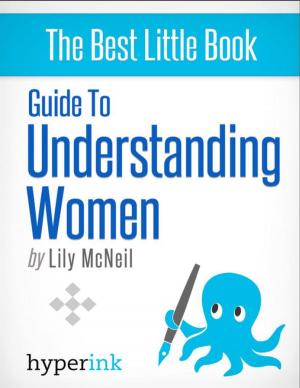What Former Patients Don't Even Know About Plastic Surgery
Nonfiction, Reference & Language, Reference, Guides & Handbooks| Author: | Serge Uri | ISBN: | 9781614648185 |
| Publisher: | Hyperink | Publication: | March 4, 2012 |
| Imprint: | Hyperink | Language: | English |
| Author: | Serge Uri |
| ISBN: | 9781614648185 |
| Publisher: | Hyperink |
| Publication: | March 4, 2012 |
| Imprint: | Hyperink |
| Language: | English |
ABOUT THE BOOK
Plastic surgery is often viewed as a miraculous solution to physical imperfections or signs of aging. Although it may certainly address many issues related to one's physical appearance, few people have a realistic approach when it comes to plastic surgery. People who have excessively high aesthetic expectations look to plastic surgery as a means to achieving those unnatural expectations.
The truth is that plastic surgery has its benefits and risks just like any other type of surgery, and while it is a great way to enhance one's physical appearance, potential patients need to know more about its nuts and bolts before making their final decision. It is important to obtain realistic, accurate information, and learn the advantages and possible problems that are associated with various types of plastic surgery.
Contrary to popular belief, plastic surgery is not only about enhancing physical appearance. Initially, plastic surgery was created as a surgical specialty that involved reconstruction and recovery after traumas, burns, birth defects or other types of unfortunate accidents that resulted in body disfigurement and altered physical appearance that significantly impaired a person's quality of life. Over the years, plastic surgery has gained popularity as a cosmetic tool and a method to correct percieved imperfections.
EXCERPT FROM THE BOOK
During a facelift, a plastic surgeon will typically make an incision behind the ear in the hairline region of the scalp, which makes it less exposed and visible. Then, the plastic surgeon will proceed by pulling the skin and assessing how much skin should be removed for a smoother and tighter face. The excess skin is removed, and then the surgeon carefully re-positions the remaining skin back in place. Sutures and bandages are applied to complete the facelift.
There are various techniques, some of which are less invasive and can yield satisfactory results. For example, a mini facelift involves pulling and re-positioning the skin in a smaller region of the face using special thin threads that are inserted in the deeper layers of the skin. Some patients are ineligible to undergo a facelift due to certain health conditions or prescription medications. This is why it is important to talk about your medical history with your plastic surgeon, who will determine whether a facelift is the proper course of action in your case.
Wrinkles can also be treated through less invasive, non-surgical cosmetic procedures such as Botox injections, laser skin resurfacing and dermal fillers. Some patients may opt for these conservative treatment alternatives because there is a lower chance of side effects and complications compared to a traditional facelift...
Buy a copy to keep reading!
CHAPTER OUTLINE
Modern Lifestyles: What Former Patients Don't Even Know About Plastic Surgery
+ Introduction
+ What Should Potential Patients Know About Rhinoplasty?
+ What Should Patients Know About a Facelift?
+ Basic Information about Liposuction
+ ...and much more
ABOUT THE BOOK
Plastic surgery is often viewed as a miraculous solution to physical imperfections or signs of aging. Although it may certainly address many issues related to one's physical appearance, few people have a realistic approach when it comes to plastic surgery. People who have excessively high aesthetic expectations look to plastic surgery as a means to achieving those unnatural expectations.
The truth is that plastic surgery has its benefits and risks just like any other type of surgery, and while it is a great way to enhance one's physical appearance, potential patients need to know more about its nuts and bolts before making their final decision. It is important to obtain realistic, accurate information, and learn the advantages and possible problems that are associated with various types of plastic surgery.
Contrary to popular belief, plastic surgery is not only about enhancing physical appearance. Initially, plastic surgery was created as a surgical specialty that involved reconstruction and recovery after traumas, burns, birth defects or other types of unfortunate accidents that resulted in body disfigurement and altered physical appearance that significantly impaired a person's quality of life. Over the years, plastic surgery has gained popularity as a cosmetic tool and a method to correct percieved imperfections.
EXCERPT FROM THE BOOK
During a facelift, a plastic surgeon will typically make an incision behind the ear in the hairline region of the scalp, which makes it less exposed and visible. Then, the plastic surgeon will proceed by pulling the skin and assessing how much skin should be removed for a smoother and tighter face. The excess skin is removed, and then the surgeon carefully re-positions the remaining skin back in place. Sutures and bandages are applied to complete the facelift.
There are various techniques, some of which are less invasive and can yield satisfactory results. For example, a mini facelift involves pulling and re-positioning the skin in a smaller region of the face using special thin threads that are inserted in the deeper layers of the skin. Some patients are ineligible to undergo a facelift due to certain health conditions or prescription medications. This is why it is important to talk about your medical history with your plastic surgeon, who will determine whether a facelift is the proper course of action in your case.
Wrinkles can also be treated through less invasive, non-surgical cosmetic procedures such as Botox injections, laser skin resurfacing and dermal fillers. Some patients may opt for these conservative treatment alternatives because there is a lower chance of side effects and complications compared to a traditional facelift...
Buy a copy to keep reading!
CHAPTER OUTLINE
Modern Lifestyles: What Former Patients Don't Even Know About Plastic Surgery
+ Introduction
+ What Should Potential Patients Know About Rhinoplasty?
+ What Should Patients Know About a Facelift?
+ Basic Information about Liposuction
+ ...and much more















